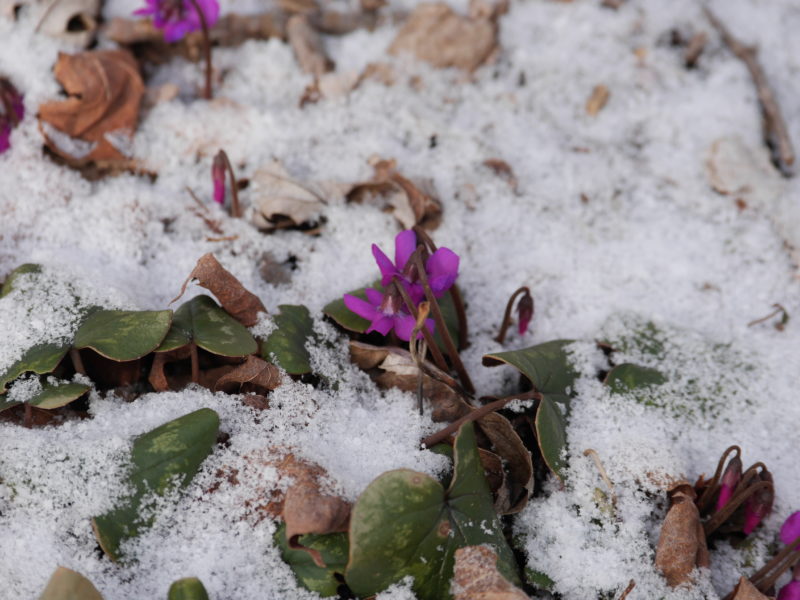

I start getting email notices for spring-flowering bulbs the spring before they’d flower and a good six months before planting time. To entice me (and you) discounts are offered for these early orders and of course, there are those copiously posted notes that popular varieties sell out early and new introductions are in short supply. The line that’s missing, though, is the one that should say, “Oh, the crops won’t be harvested for several months, and we have no idea what the quality will be like.”
Ninety-nine percent of the spring-flowering bulbs are grown in Holland, and just like anyplace else in the world, Holland is subject to droughts, cold summers, wet summers and, of course, perfect summers. All of these variables can affect the bulb crops and their quality, but for some strange reason these early order offers never seem to mention that. And who follows the weather in Holland anyway? Bulb importers certainly do, but you and I really don’t have a clue.
Then right after Labor Day you start to see packages of spring bulbs like tulips and daffodils showing up in big box stores, hardware stores, home improvement centers and supermarkets. To my dismay, people actually buy them there, but there should be a contraption on the displays that slaps their hands as they grab the package. These are generally the lowest quality and smallest size bulbs (diameters measured in centimeters) and while they seem like bargains, you only find out the following spring that the results are not quite what you had hoped for.
The other issue with these early bargains is that planting time isn’t until sometime in October. While the bulbs are sitting around waiting for their earthly digs they are drying out and exposed to any number of fungi that could damage them. In 2013, many unwitting folks who bought these bulbs early and planted them early got a rude surprise. Because of the warm winter some of the bulbs never went completely dormant, and in early winter they began to pop up in gardens sans flowers. Better to plant these (reasonably) late instead of conveniently early.
So, let’s take a step backward. You want to know why we plant these bulbs in the fall when the ground in cool instead of in the spring when the soil is warm and welcoming? Well, I thought you’d never ask. These bulbs, including the hardy lilies (which aren’t true bulbs) are planted into soil that is getting progressively cooler because the cool soil stimulates root growth but not shoot growth. In the cooler soil, the roots establish, and then as the soil really gets cold, the roots stop growing.
These roots will serve two functions. A well-established root mass on a tulip (or other bulb) gives the plant that emerges in the spring a sturdy anchor. Imagine a 24-inch tulip growing from an inch and a half bulb planted only a few inches into the ground on a windy day with no roots. It would topple in the slightest breeze. The roots also function to draw moisture and nutrients from the surrounding soil supplying the shoot, foliage and flowers with moisture. The nutrients are used to renew the bulbs “energy” stores where the following year’s flower will be produced, in the bulb.
The time of planting and depth of plating is related to the particular bulb you’re planting so make sure you refer to a planting chart so you know the correct planting depth. Most bulbs don’t require any special soils or soil preparation (pure sand won’t work though) and the addition of bulb ‘foods’ or ‘boosters’ at planting time is debatable since next spring’s flowers have already been produced and no amount of feeding will make the flowers bigger. These types of products are usually depleted in the soil before the bulb can take advantage of them.
Bulbs like the hardy lilies and Fritillarias (again, neither of these are true bulbs) are much more fragile than the likes of tulips and daffodils, and they need to be planted pretty quickly after they arrive — that’s in days, not weeks. And unlike the “true” bulbs these need special planting care and often require that the soil in the planting hold be amended. I place my order for hardy lilies in July and they usually arrive in mid-October. The planting holes for these are much different than for other bulbs so I try to dig the holes in September and loosely fill them with amended soil. When the bulbs arrive. all I need to do is redig the soft soil to the planting depth and in a few minutes I can plant and water in a half dozen July-flowering Asiatics or Orienpets. If you buy yours at a local garden center, try to get them as soon as they show up on the display shelves and plant them a few days later.
Things to keep in mind: You can still order bulbs from the major suppliers and maybe have them at your house for planting time, but in this year of gardening frenzy everyone is running short early. Go to their websites. Not only can you find out what’s available but each site contains a treasure trove of information and tips on selecting the right bulb for the right use as well as plenty of planting and care instructions. Try vendors such as Brent and Becky’s, Van Engelen, John Scheepers, Old House Gardens and White Flower Farm.
The better — as in expensive — local garden centers on the East End usually carry both bagged and loose bulbs and can be great sources of bulbs and information. When buying loose bulbs, remember to put each variety in a separate bag and label the bag. Loose bulbs are usually larger, and larger is certainly better. The added cost is certainly worth it.
Years ago tulips were cheap, and I didn’t mind spending the money for displays that last only a week to 10 days and come back for only two to three years. Instead, I now confine my tulip plantings to my cutting garden where I’ll plant 20 or more of a variety in blocks (tight) and I include various heights, blooming times and flower structures. Remember that deer will dig up tulip bulbs as will squirrels — the tulip area is well fenced.
Daffodils are both squirrel and deer resistant and look great when planted in drifts. We’ve come a long way since the single yellow daffodils so take a look at what’s available. If you want your drift to grow and expand, pay particular attention to the varieties that are noted as well suited for naturalizing. Just keep in mind that daffodil foliage needs to remain intact in the spring until it browns. This is a good thing to remember when choosing your planting site. They’ll grow in a lawn area but do you want that foot-tall foliage hanging around until June?
The “minor” bulbs are only minor in their size and not their display. These are small bulbs like crocus, anemone, grape hyacinths (Muscari), snowdrops, Camassia, Chionodoxa, crocus, Galanthus, Leucojum and several others. Many of these such as the snowdrops can be planted en masse in the woods as they flower early and their foliage matures before the deciduous trees leaf out and create a shade canopy.
And if you want to be hit smack in the nostrils with the scent of spring you just have to plant a dozen or more hyacinths. Available in blues, pinks, white and reds, this is the bulb that always puts a smile on my face as I go out the front door or when I come home at the end of the day. For 10 days to two weeks they provide a splash of low-down color and the pure scent of spring.
So gardeners, get out your bulb planters and augers, and get your electric drills ready. Electric drills? I’ll explain in two weeks. Don’t plant quite yet and keep your bulbs in a cool, dry place where rodents won’t get to them. In two weeks I’ll tell you everything you need to know about planting and protecting your bulbs, which will last and which won’t. The scents and colors of spring are only two seasons and about 150 days away. Bulb beds and plantings should be planned, not simply planted. Keep growing.
For a helpful bulb planting selection chart, use this link bit.ly/2Gfnv6Z.
If you’re getting emails or mail offers to buy Pearl’s Premium Ultra Low Maintenance Lawn Seed, pass it up. It’s not a miracle grass seed, and some of the claims are hard to substantiate. I’ve tried several times to get detailed information from the “inventor” but never seem to get a seed label or any links to trials where this seed mix has been evaluated in side by side studies. Save your money. The seed sounds too good to be true. And, it is.
Many summer-flowering perennials can now be divided. It’s a great way to make that $50 hosta into three or four, as long as the parent plant is full and mature. Peonies can still be divided and renovated but time’s running out.
Keep cleaning the veggie garden, rose garden and orchard. Don’t leave dropped fruits and leaves around.
Get some Reemay to cover your tender plants and vegetables when frost is expected. It’s light and easy to use. It gives a little cold protection but good frost protection.
 More Posts from Andrew Messinger
More Posts from Andrew Messinger